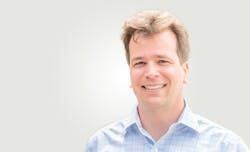How Business Process Modeling can Prepare you for Digital Transformation
Whether you’ve planned for it or not, your business is heading for digital transformation.
As a way to remain competitive and respond to changes in consumer demand, companies need to explore how their business processes can be digitized. This stage of identifying where a business needs to start planning their digital transformation is often complex.
After attending the Victorian Manufacturing Showcase and speaking to a number of companies that want to be more prepared for digital operations, the team at Nukon want to help more companies to identify what is needed.
Identifying the starting point for digital operations
Reaching full digital operations can start with small, isolated processes being implemented. Through gradual changes, the business can grow and scale in a sustainable and risk-free way.
For some businesses, this might mean transitioning from analog to a wholly digital process. The crucial step of moving from paper to systems is often underestimated. Without access to a robust and reliable data source, the investment in these digital technologies and offerings might not deliver the return that business stakeholders expect after all the hype.
A typical scenario—that is still seen in many companies—is having a set of fit-for-purpose applications. They are part of disconnected and often siloed architecture (or group of systems) that requires accessing multiple programs in order to complete an end-to-end process.
The level of manual work needed to execute any processes in this scenario can be time consuming and error prone. It is heavily reliant on operator knowledge and attention to ensure routine tasks are carried out.
In addition, data captured through paper forms is generally low quality because of manual entry, handwriting, data formats and limits cannot be enforced, and paper is prone to damage. Any data captured cannot be easily searched, trended, or analyzed over time, which leads to further long-term inefficiencies. This is often coupled with any number of Excel spreadsheets or Access databases built internally. These are often tough to support by the business, in particular if the author leaves the business.
Integrating systems and machines has been possible for a long time. It’s not new that companies are starting to integrate their disparate Information Technology (IT) and Operational Technology (OT) systems such as enterprise resource planning (ERP), manufacturing execution systems (MES), and business finance systems.
This is where business process modelling and notation (BPMN) comes in.
BPMN is a method to setup a system to execute a workflow, assign tasks, automate system integration, all based on a human readable diagram. BPMN is great to orchestrate systems, machines, and people to achieve a better outcome for the business. Key processes can be automated while keeping the people who execute the tasks connected and empowered.
A streamlined and efficient workforce helps businesses better respond to increasing consumer demand for transparency and improved services. By automating part of the repetitive tasks, staff have the ability to focus on improvements and value-adding tasks.
Implementing process automation provides the ability to:
- Streamline processes by bringing together different information systems;
- Gain insight based on combining disparate sources of data;
- Add transparency to your operations and improve data integrity;
- Increase process execution adherence (the difference between what people do and what they are supposed to do); and
- Reduce costs by only doing what is necessary.
Achieving the right building blocks for efficient digital operations
Starting your digital transformation with small improvements is an approach that provides a solid framework for your journey, and fundamental digitization steps such as business process modelling can take less time to execute than you might think. Tasks such as drawing the workflow diagram can be done quite quickly, providing a strong foundation for a business to further their workflow journey.
If the end goal is to achieve a higher degree of automation, then working with a digital transformation specialist to develop the strategy needed to drive a successful transformation, could be the answer.
Rafael Amaral is the Chief Technology Officer at Nukon, a SAGE Group brand. SAGE is a certified member of the Control System Integrators Association (CSIA). For more information about SAGE, visit its profile on the CSIA Industrial Automation Exchange.
About the Author
Rafael Amaral
Chief Technical Officer, TilliT
Rafael has been helping manufacturing businesses worldwide to increase their operational efficiency, service level, and quality for more than 18 years.
As Chief Technical Officer for TilliT, he leads a team of software and systems developers to enable industrial digital transformations across several verticals.
Through his work with manufacturing clients, Rafael has seen how many businesses are still managing their supply chain and execution processes with basic spreadsheets and paperwork. Knowing that moving to a digital solution nowadays is not as complicated and expensive as people may think motivates him to see the potential of helping businesses improve and thrive.
This led Raf towards developing alternative approaches to traditional complicated supply management systems, convoluted MES platforms, and machine oriented OEE software.
Since launching TilliT, a cloud-based digital operations platform, Rafael has worked with world-leading manufacturers to gather important data, improve their throughput rate, and have confidence in the quality of their output.

Leaders relevant to this article:
